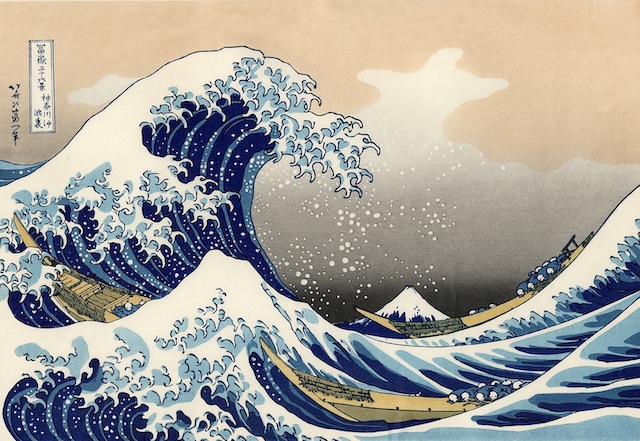The decent from the summit was more difficult than I imagined it would be. The steep angles combined with technical requirements were compounded by traffic moving up the mountain. Given the condition of my boots, I needed to be extra careful to secure my footing. The guide rope where available was of little assistance and use of the pole was critical. On less rocky portions, it was easy to begin sliding or slipping. Maintaining an even keel became quite the challenge.
The task placed great pressure on leg muscles and knees. Unfortunately, I did have a misstep and injured my right knee just before Station 8. We found at first aid station when we reached station 8 and received a role of duct tape. Keiko did a great job of taping the soles back onto the shoes.
After a brief rest, we proceeded at a slower but steady pace. The route never seemed easier going down and the duct tape did not hold. The jagged nature of the rocky path chewed it up and I was forced to removed the torn tape and soles at station 7.5.
Proceeding in my moccasin-like footwear we continued and were within view of station 6 … after which I new the route was much easier and of less an incline. Station 5, our start point was near!
At that point Keiko and I received calls on our mobile phone from the Rescue Service. Keiko had sent out photos of my boots from the summit and many friends and family members were concerned. The Rescue Service was alerted and met us at station 6.
Everyone seemed more concerned than I was and they insisted that I rest. I must admit the mattress the station staff arranged for me to lay down on felt really good. My only request was for a coke … and Keiko produced one.
Two young men from the Rescue/SWAT Service insisted on trying to carry me down to station 5. I reluctantly agreed to a piggyback lift but 210 pounds of “dead” weight on that trail was dangerous for both them and myself. Fortunately, they had brought a pair of service boots with them. By Japanese standards, I have large feet and they did not expect them to fit me. They were about a half size to small but I pressed into them and continued, with their assistance to head for station 5 under my own power. Except for one short extremely difficult section where they insisted on carrying me through, I reached the base station walking and smiling all the way.
After 17 hours, we were off the mountain. It was nice to have members of the Fujikawa family there to greet me and I was deeply grateful for the assistance of the Rescue Service.
It was quite the adventure; a thrill of my lifetime. I have yet to fully appreciate the totality of my experience. Without question, it was the most physical challenge I have ever endured. I had to dig deep down to get up and down that mountain. The constant support, encouragement and patience of Keiko and Kase were critical to my success. I needed to deal with a host mental and emotional demons –– and a sense of fear (potential physical pain and failure).
It took a few days to recover physically –– helped by the trip to the hot springs.
I conquered Mt. Fuji. In that sense it was a credit to the physical and mental shape of a 68 year old guy. More importantly, Mt. Fuji taught me a great deal about myself, and helped me understand and appreciate so many lessons of life.
I now understand why generations of Japanese have worshipped this majestic mountain and climbed its slopes to the summit. Renewed and energized by the experience, I look forward to the days ahead.



















